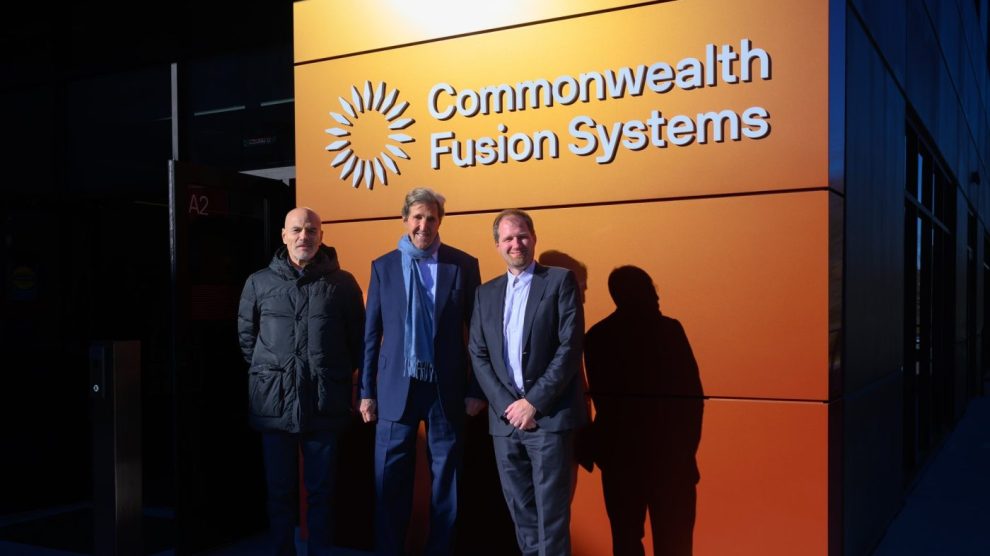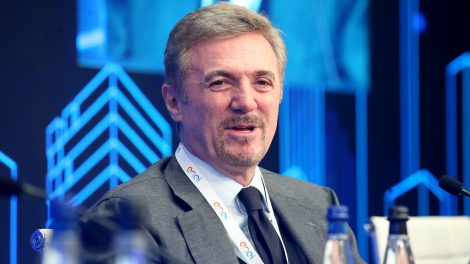Incoming commercial fusion strategy. On Monday, White House Climate Envoy John Kerry announced that the United States would unveil a plan to commercialise nuclear fusion power at the COP28 climate conference in Dubai. His wording suggests that Washington is treating this elusive breakthrough – harnessing the process that fuels the stars to produce electricity – as a practical and in-reach solution to decarbonise in the near future.
- “Fusion energy is no longer just a science experiment,” he said, arguing that decades of federal investment are turning it into “an emerging climate solution. I will have much more to say on the US’ vision for international partnerships for an inclusive fusion energy future at COP28, during an event on December 5.”
A (part-)Italian backdrop. Mr Kerry made his announcement as he toured the facilities of Commonwealth Fusion Systems with its CEO, Bob Mumgaard, and Claudio Descalzi, CEO of Italian energy major Eni, a strategic and heavily invested backer. The setting was far from coincidental, of course, as CFS stands out among nuclear fusion companies as one of the most promising candidates for quickly delivering fusion power.
- Within the 43 private companies working on fusion, CFS has one of the most ambitious deployment plans – demonstrate in 2025, commercialise in the early 2030s – and has attracted the lion’s share of private investment – roughly $2 billion out of over $6.3 billion in private investments so far, according to data from the Fusion Industry Association.
- In 2021, CFS was also responsible for a breakthrough in superconductor technology, successfully producing the powerful magnets necessary to contain incandescent plasma in tokamak-type fusion reactors.
Following Fermi’s footsteps. All these signs seem to indicate that Italy – via State-participated Eni, which is investing in three more fusion pilot projects on top of CFS’ – could once again become a major player on the frontier of nuclear energy development along with the US. A joint success would carry the symbolic legacy of the US-naturalised Italian father of nuclear fission, Enrico Fermi, nearly a century after he became the architect of the nuclear age.
- He and his team laid the foundations for generating energy from radioactive elements in Rome in the 1930s. He then fled the fascist regime’s racial laws in 1938 (fearing for his Jewish wife Laura Capon).
- He continued his work in the US, becoming an instrumental part of Project Manhattan and developing the technology at the core of nuclear fusion reactors, and ultimately died in Chicago in 1954.
Fusion’s “SpaceX moment”? The theoretical potential of nuclear fusion – i.e. the promise of immense amounts of safe, clean, waste-free, essentially unlimited and cheap energy – is the reason why the ITER project, an international consortium to build a demonstration fusion reactor, is history’s second-most important international scientific collaboration (behind the International Space Station).
- However, technical hurdles and external shocks are weighing on its already lengthy timeframes, compounding a long-running joke in the field of nuclear research: that fusion is and will always be just a few decades away.
- Still, several technological breakthroughs over the past years have spurred an unprecedented wave of private investments in nimble startups promising to build smaller, innovative and easier-to-build reactors much faster than ITER.
- Going by Mr Kerry’s words, it seems that the White House is also convinced that this could be fusion’s “SpaceX moment” – and is ready to boost its prospects by facilitating cooperation and investments.
Image: @ClimateEnvoy on X




